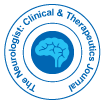Pathophysiology of Anxiety and the Function of Different Stem Cell Types
Received Date: Mar 01, 2023 / Published Date: Mar 31, 2023
Abstract
Major depressive disorder (MDD), colloquially known as depression, is a debilitating condition that affects an estimated 3.8% of the world’s population. MDD is distinguished from normal mood swings and short-lived emotional responses by subtle gray and white matter alterations in the frontal, hippocampal, temporal, thalamus, striatum, and amygdala. When occurring at moderate or severe intensity, it can be detrimental to a person’s overall health. When the illness reaches its peak, it can lead to suicidal or suicidal thoughts. Antidepressants treat clinical depression and work by modulating levels of serotonin, norepinephrine, and dopamine neurotransmitters in the brain. Patients with MDD respond positively to antidepressants, but 10–30% fail to recover or have a partial response, leading to decreased quality of life, suicidal ideation, self-harm, and relapse. result in an increase in rate. Accompany. Recent studies have shown that mesenchymal stem cells and iPSCs may play a role in alleviating depression by generating more neurons with increased cortical connectivity. This narrative review describes the plausible role of different stem cell types in treating and understanding the pathophysiology of depression.
Citation: Ejike J (2023) Pathophysiology of Anxiety and the Function of Different Stem Cell Types. Neurol Clin Therapeut J 7: 136.
Copyright: © 2023 Ejike J. This is an open-access article distributed under the terms of the Creative Commons Attribution License, which permits unrestricted use, distribution, and reproduction in any medium, provided the original author and source are credited.
Share This Article
Open Access Journals
Article Usage
- Total views: 1017
- [From(publication date): 0-2023 - Apr 07, 2025]
- Breakdown by view type
- HTML page views: 791
- PDF downloads: 226
